INDICATION
RYTELO™ (imetelstat) is indicated for the treatment of adult patients with low- to intermediate-1 risk myelodysplastic syndromes (MDS) with transfusion-dependent anemia requiring 4 or more red blood cell units over 8 weeks who have not responded to or have lost response to or are ineligible for erythropoiesis-stimulating agents (ESA). See more
Dosing and administration for RYTELO

The recommended dose of RYTELO is 7.1 mg/kg1,*
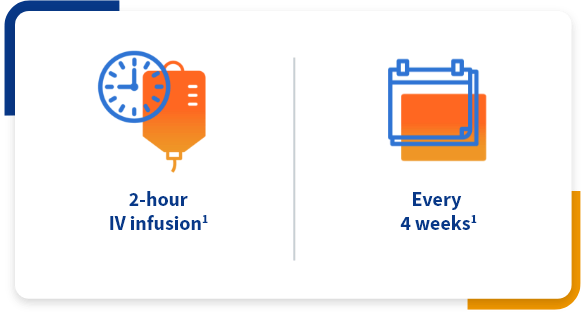
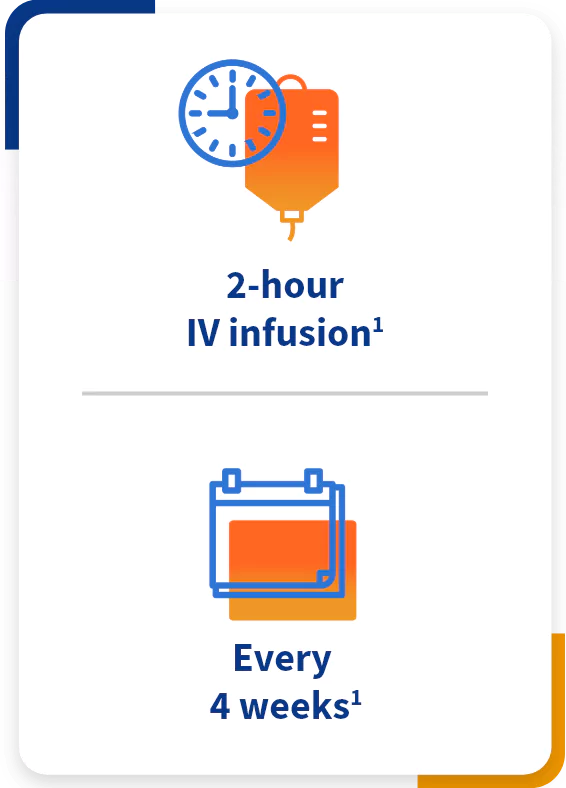
*The approved 7.1 mg/kg dose of imetelstat (active moiety) equates to 7.5 mg/kg imetelstat sodium (the salt) referenced in the trial publication.1,2
Reconstitution instructions1
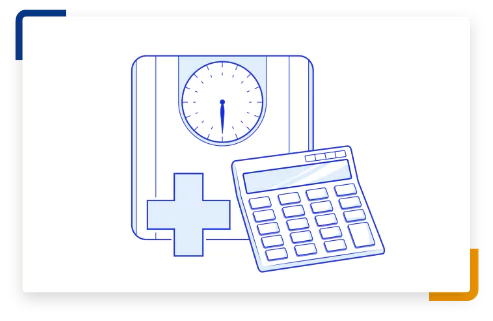
Calculate the dose of RYTELO needed based on the patient’s body weight (kg).
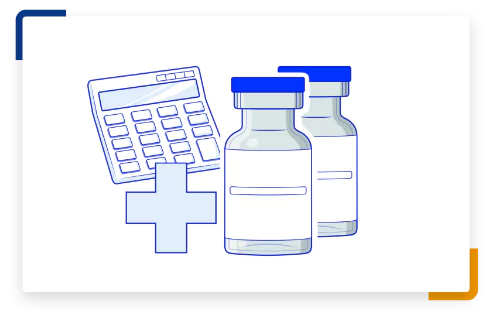
Determine the number of RYTELO vials needed to achieve the required dose (total mg). More than one vial may be needed to achieve a full dose. See table below.
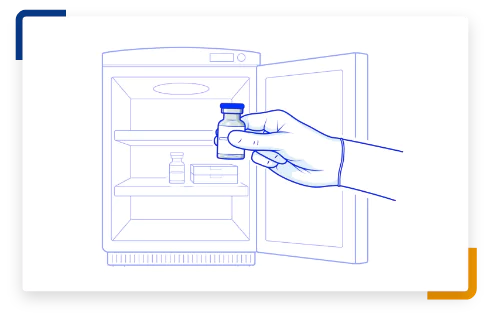
Remove the RYTELO vials from the refrigerator and allow the vials to sit for 10 to 15 minutes (not to exceed 30 minutes) to adjust to room temperature, 20°C to 25°C (68°F-77°F) before use.
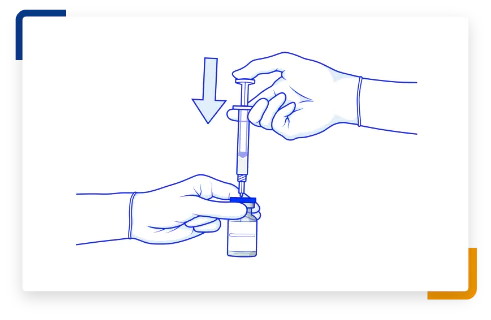
Reconstitute each vial of RYTELO with the volume of 0.9% Sodium Chloride Injection required for the given vial size directly onto the lyophilized powder to obtain a concentration of 31.4 mg/mL of imetelstat. See table below.
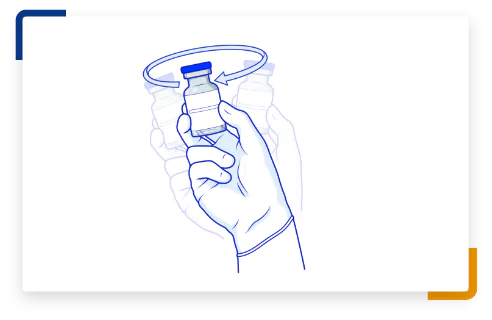
Swirl each vial gently to avoid foaming until the powder is fully reconstituted (not to exceed 15 minutes).
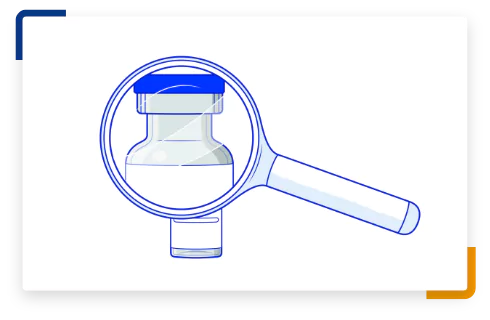
Parenteral drug products should be inspected visually for particulate matter and discoloration prior to administration, whenever solution and container permit.
- The reconstituted solution in each vial should appear as a clear to slightly hazy solution, essentially free of visible contaminants, particles, and/or particulates
- Use the reconstituted solution immediately to prepare the RYTELO diluted solution in the infusion bag
Reconstitution volumes1,†
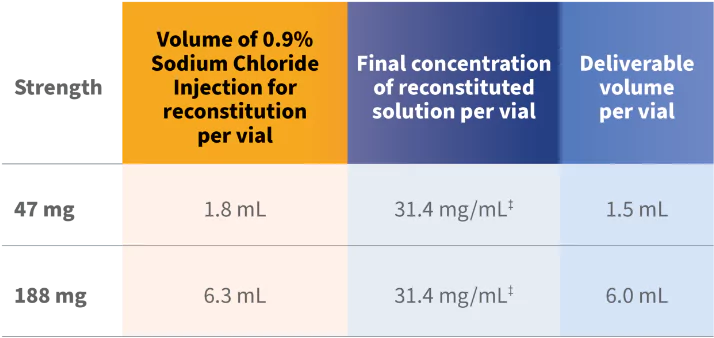
†Recommended to use the appropriate combination of vial strengths to most closely match the intended dose based on the patient’s weight.1
‡Each vial contains an overfill to account for loss of liquid during preparation and extraction of the reconstituted solution, resulting in the final concentration shown in table above.1
IV, intravenous.
Instructions for diluting RYTELO1

Calculate the required volume of the reconstituted RYTELO solution needed to obtain the appropriate dose according to the patient’s body weight.

Withdraw a volume equal to the required reconstituted RYTELO solution from a 500 mL infusion bag of 0.9% Sodium Chloride Injection and discard it.

Add the required volume of reconstituted RYTELO solution into the infusion bag so that the total final volume of RYTELO solution in the bag is approximately 500 mL. Discard any unused portion of the reconstituted solution remaining in each vial.

Gently invert the infusion bag at least 5 times to ensure that the reconstituted RYTELO is well mixed. Do not shake the infusion bag prior to administration.
Storing diluted solution1
- If not used immediately, ensure that the diluted solution for infusion is used within the total time frames specified below, according to storage temperature:
When stored at room temperature, 20°C to 25°C (68°F-77°F):
- The total time from the reconstitution of RYTELO to completion of IV infusion should not exceed 18 hours from the time of reconstitution
When stored in refrigerator, 2°C to 8°C (36°F-46°F):
- The total time from the reconstitution of RYTELO to completion of IV infusion should not exceed 48 hours from the time of reconstitution
Administering RYTELO to a patient1
Lab monitoring required
- Monitor complete blood cell counts prior to initiation
- Weekly for first 2 cycles
- Prior to each cycle thereafter
- Monitor liver function tests prior to administration of RYTELO at each cycle and as clinically indicated
- Administer growth factors and anti-infective therapies or platelet transfusions for treatment or prophylaxis as appropriate
Premedications1:
To prevent or reduce potential infusion-related reactions, patients should receive both of the following medications, or equivalents, either intravenously or orally within at least 30 minutes prior to dosing with RYTELO:
diphenhydramine or equivalent
(25-50 mg)
+
hydrocortisone or equivalent
(100-200 mg)

When administering RYTELO to a patient1:

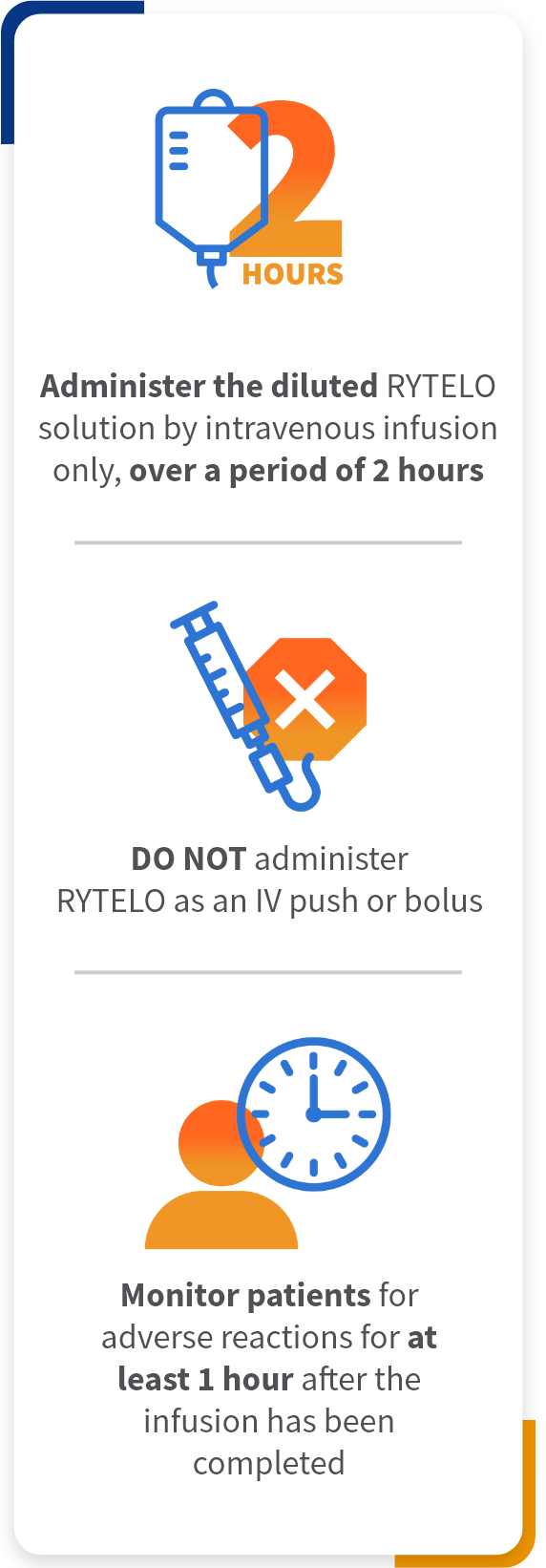
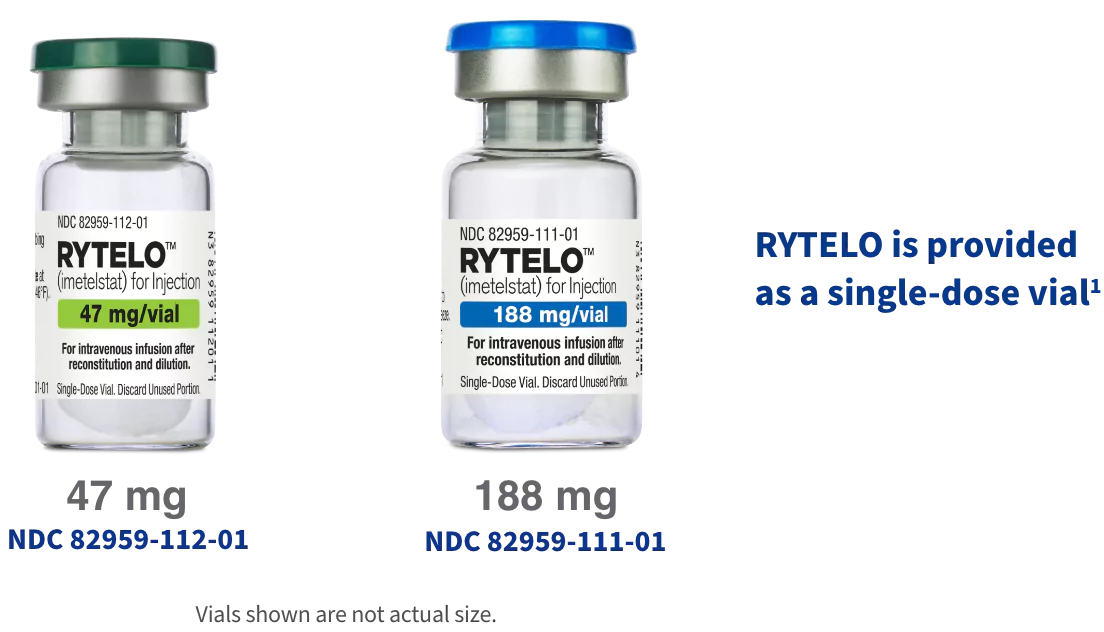
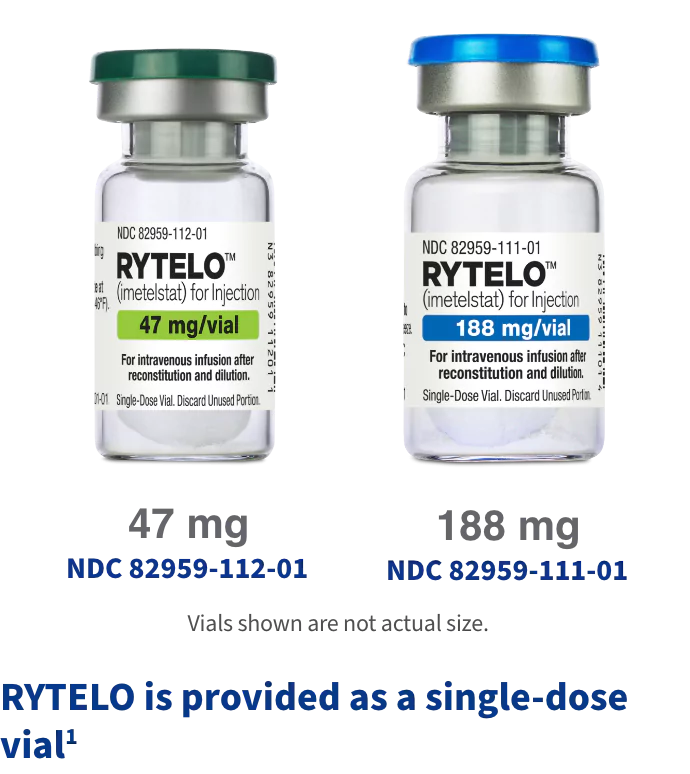


How to properly store the RYTELO vial1


References: 1. RYTELO. Prescribing information. Geron Corp.; 2024. 2. Platzbecker U, Santini V, Fenaux P, et al. Imetelstat in patients with lower-risk myelodysplastic syndromes who have relapsed or are refractory to erythropoiesis-stimulating agents (IMerge): a multinational, randomised, double-blind, placebo-controlled, phase 3 trial. Lancet. 2024;403(10423):249-260.
INDICATION
RYTELO™ (imetelstat) is indicated for the treatment of adult patients with low- to intermediate-1 risk myelodysplastic syndromes (MDS) with transfusion-dependent anemia requiring 4 or more red blood cell units over 8 weeks who have not responded to or have lost response to or are ineligible for erythropoiesis-stimulating agents (ESA).
IMPORTANT SAFETY INFORMATION
WARNINGS AND PRECAUTIONS
Thrombocytopenia
RYTELO can cause thrombocytopenia based on laboratory values. In the clinical trial, new or worsening Grade 3 or 4 decreased platelets occurred in 65% of patients with MDS treated with RYTELO.
Monitor patients with thrombocytopenia for bleeding. Monitor complete blood cell counts prior to initiation of RYTELO, weekly for the first two cycles, prior to each cycle thereafter, and as clinically indicated. Administer platelet transfusions as appropriate. Delay the next cycle and resume at the same or reduced dose, or discontinue as recommended.
Neutropenia
RYTELO can cause neutropenia based on laboratory values. In the clinical trial, new or worsening Grade 3 or 4 decreased neutrophils occurred in 72% of patients with MDS treated with RYTELO.
Monitor patients with Grade 3 or 4 neutropenia for infections, including sepsis. Monitor complete blood cell counts prior to initiation of RYTELO, weekly for the first two cycles, prior to each cycle thereafter, and as clinically indicated. Administer growth factors and anti-infective therapies for treatment or prophylaxis as appropriate. Delay the next cycle and resume at the same or reduced dose, or discontinue as recommended.
Infusion-Related Reactions
RYTELO can cause infusion-related reactions. In the clinical trial, infusion-related reactions occurred in 8% of patients with MDS treated with RYTELO; Grade 3 or 4 infusion-related reactions occurred in 1.7%, including hypertensive crisis (0.8%). The most common infusion-related reaction was headache (4.2%). Infusion-related reactions usually occur during or shortly after the end of the infusion.
Premedicate patients at least 30 minutes prior to infusion with diphenhydramine and hydrocortisone as recommended and monitor patients for one hour following the infusion as recommended. Manage symptoms of infusion-related reactions with supportive care and infusion interruptions, decrease infusion rate, or permanently discontinue as recommended.
Embryo-Fetal Toxicity
RYTELO can cause embryo-fetal harm when administered to a pregnant woman. Advise pregnant women of the potential risk to a fetus. Advise females of reproductive potential to use effective contraception during treatment with RYTELO and for 1 week after the last dose.
ADVERSE REACTIONS
Serious adverse reactions occurred in 32% of patients who received RYTELO. Serious adverse reactions in >2% of patients included sepsis (4.2%), fracture (3.4%), cardiac failure (2.5%), and hemorrhage (2.5%). Fatal adverse reactions occurred in 0.8% of patients who received RYTELO, including sepsis (0.8%).
Most common adverse reactions (≥10% with a difference between arms of >5% compared to placebo), including laboratory abnormalities, were decreased platelets, decreased white blood cells, decreased neutrophils, increased AST, increased alkaline phosphatase, increased ALT, fatigue, prolonged partial thromboplastin time, arthralgia/myalgia, COVID-19 infections, and headache.
Please see full Prescribing Information, including Medication Guide.
You are encouraged to report adverse events related to Geron products by calling 1-855-437-6664 (1-855-GERON-MI) (US only). If you prefer, you may contact the US Food and Drug Administration (FDA) directly. Visit www.fda.gov/MedWatch or call 1-800-FDA-1088.
